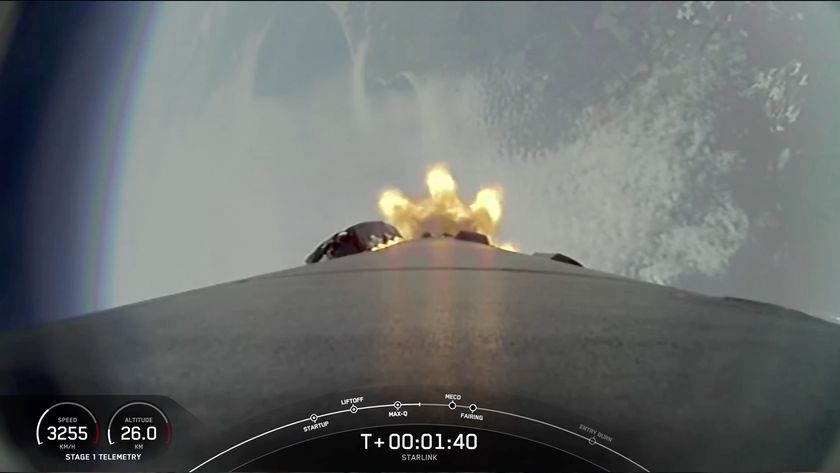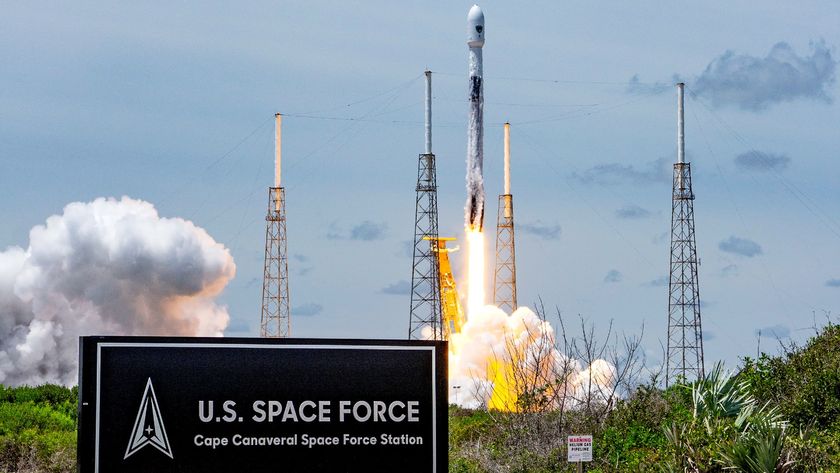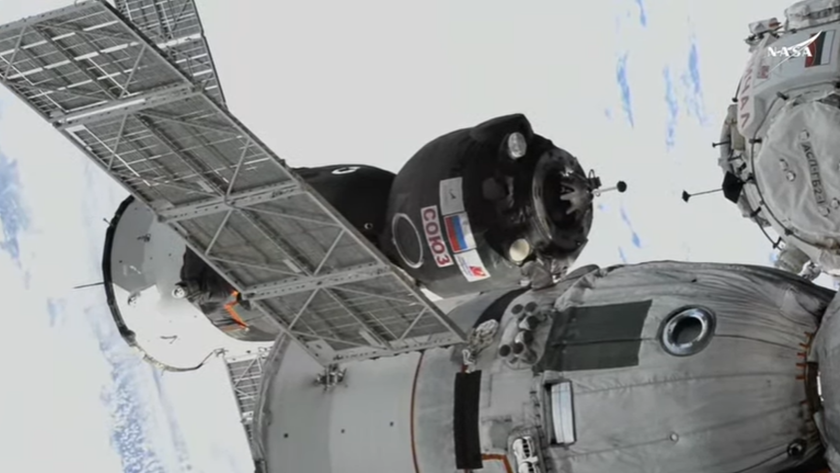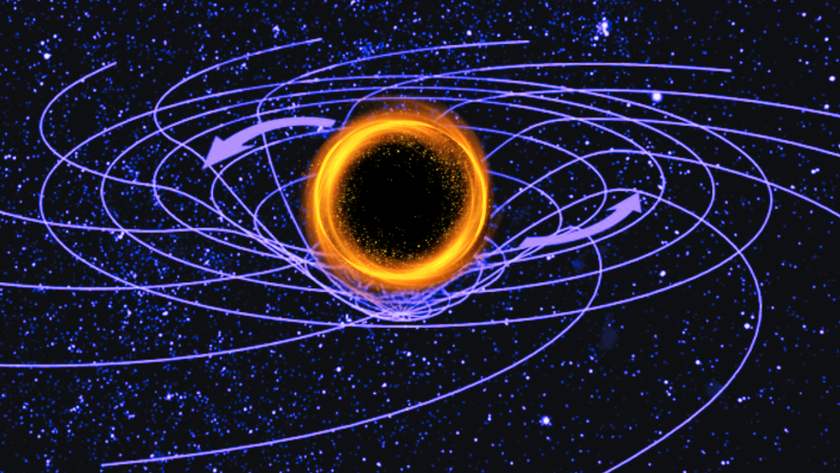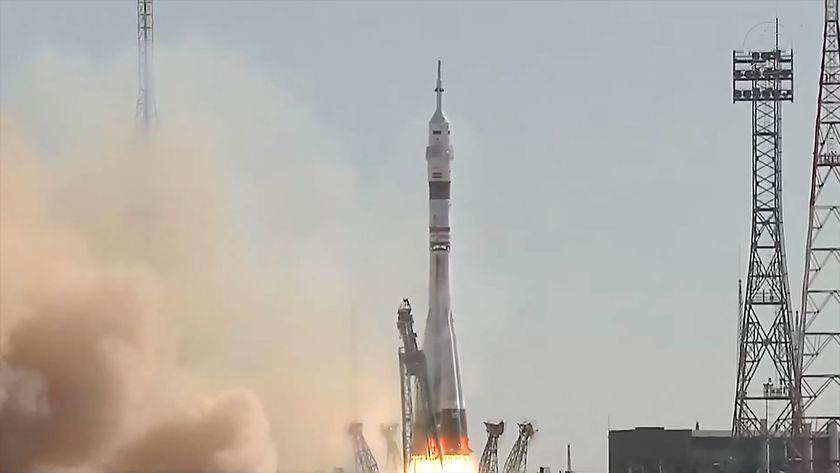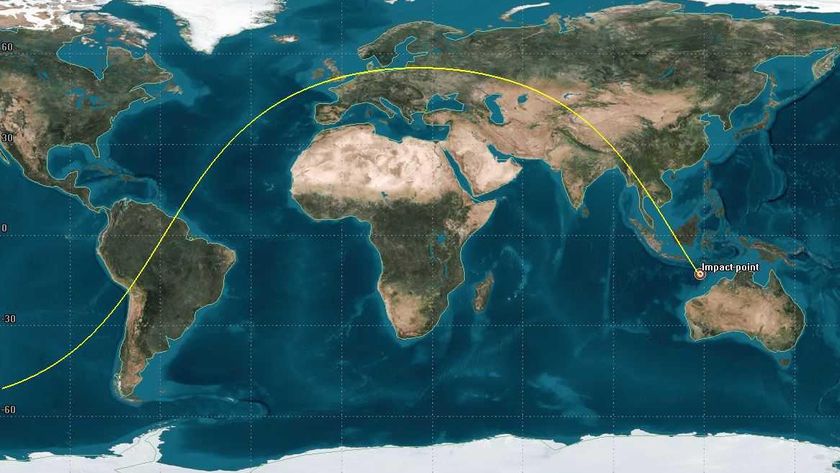60 Years of Rocket Launches: The Rise of America's Florida Spaceport
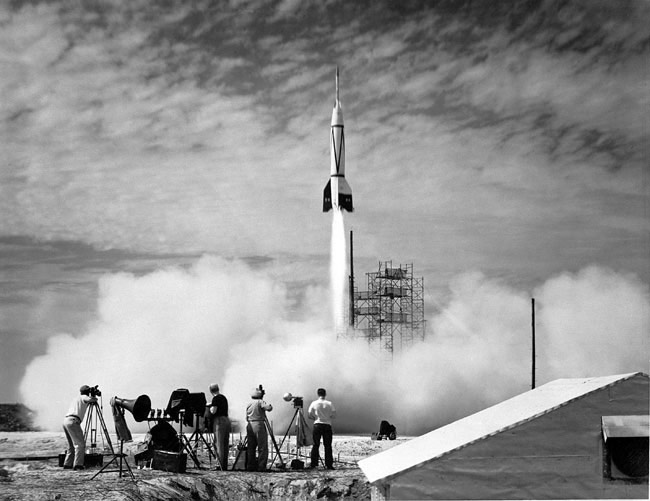
Sixty years ago Saturday morning, a rocket stood ready tolaunch from the east coast of Florida, destined to make history ? not so muchfor where it was going, but for where it was departing.
Bumper 8, a two-stage vehicle built from a U.S.-modified,World War II-captured German V-2 missile and a sounding rocket upper-stage,became the first to liftoff from what is now known as Cape Canaveral.
A ceremony to mark the 60th anniversary of Bumper 8'shistoric flight will take place today at the Florida launching pad. [Photo: Florida'sfirst rocket launch.]
Florida's first rocket
The launch, which took place on July 24, 1950 at 9:28 a.m.EDT (1428 GMT), established the Florida spaceport long before space was theobjective.
?It was only about missile research,? Michael Neufeld, chairof the National Air and Space Museum?s Space History Division, told SPACE.com.?The Cape as a launch site emerged in the late '40s when the armed serviceswere looking at developing missiles longer than the White Sands [New Mexico]range could accommodate.?
?There was an inter-service examination where an appropriatelong-range proving ground ? that was what it was called, the first iteration[of Cape Canaveral] was called the Long Range Proving Ground ? where it couldbe,? Neufeld said.
Get the Space.com Newsletter
Breaking space news, the latest updates on rocket launches, skywatching events and more!
Bumper8, the seventh in a test series of launches that was named after the waythe two stages separated ? or bumped apart ? at altitude, picked up at the Capewhere the earlier tests in New Mexico had left off.
?What the 1950 tests were about, which is something thatvery few people know, is that these Bumper launches were not altitude-launches,like the Bumper that went to 250 miles after multiple failures,? describedNeufeld. ?These Bumper launches were designed to go on a much flattertrajectory and gather some data about hypersonicflight more in the upper atmosphere. And that was explicitly connected totrying to develop long-range cruise missiles.?
60 years of rocket history
As rocket launches go ? or went in the six decades thatfollowed ? Bumper 8?s two-minute flight was not a total success. [NASA'sMost Memorable Missions]
?Bumper 8 did not meet all its objectives,? explained? veteranspace journalist Jim Banke, who will address an invited audience of CapeCanaveral personnel at a 60th anniversary ceremony ?this morning at the launchsite.
?By and large, it was a successful mission in that itlaunched, it staged ? which was the whole point of the flight to prove thatstaging could work and that the benefits of staging were real ? but then afterthey staged they lost almost immediate contact and track with the WAC Corporalupper stage and they think that it basically broke apart,? he added.
?Because of that ? the mission did not meet all of itsobjective ? so a lot of people used to call it a failure,? said Banke.?But now it seems like we want to call it a success only it didn?t meet all ofits objectives.?
Though it was impossible for the Bumper 8 team to know then,their ?successful failure? entered the history books for something other thanown test objectives.
?I think that Bumper 8?s real significance is that it wassimply the first launch [from Cape Canveral]. I don't think the Bumper launcheswere even successful at the Cape. But that launch certainly places thatsignificant marking point when the Cape began,? Neufeld said.
?Bumper 8 was the first launch from Cape. It was thebeginning of a 60-year now long tradition of excellence, of teamwork, or peopledoing miraculous things for the good of all. That?s why it was important andthat?s why it is important here. It?s usually a local legacy, a heritage thing,something we are proud of in own our backyard,? said Banke.
Since Bumper 8, more than 3,000 rockets, missiles and mannedspacecraft have followed its path skyward from the Florida launch-site. It wasthe latter though, that captured the public?s imagination and really put CapeCanaveral on the map.
?In the '60s of course, it became the human spaceflightcenter and that is what everybody thought about, knew about. The fact thatmilitary activity continued there was increasingly obscured by the overwhelmingfocus on the humanspaceflight program,? Neufeld said. ?I don't think most of the people areaware that most of the territory is in the Air Force side and that's where mostof the launches are because [NASA?s] Kennedy Space Center has all thevisibility.?
Out of space shuttles, out of sight?
?I think if you look to the non-space buff crowd, nobodyknows about what is going on [at Cape Canaveral] except that the space shuttleis launched. They may have the vaguest knowledge that other rockets arelaunched there, but the overwhelming public image is that of the shuttle andthat's where the shuttles are launched. So I wonder what people think is goingto happen to the place,? said Neufeld.
?The impression that I get is that if the public thinks ofit all, it is when the shuttle launches and those are technically not even atCape Canaveral,? said Joel Powell, author of the 2006 book, ?Go For Launch: AnIllustrated History of Cape Canaveral.? ?The public doesn?t really take a lotof notice [of rocket launches] ? even when the Mars Exploration Rovers werelaunched to Mars or even the Lunar Reconnaissance Orbiter ? they really don?tnotice them anymore.?
?The shuttle is still capturing their attention but ofcourse the shuttle is going away,? he remarked.
As for the site itself, Powell said that Cape Canaveral isalso losing much of its landscape to the passage of time. ?The impression thatI get when I visit recently is that it is slowly reverting back to its naturalstate, except for the active launch pads.?
?I am a little bit saddened that most of the older launchpads have really been demolished and obliterated so that slowly, all thehistorical facilities are being literally plowed into the ground,? said Powell,who added that Pad 3, where Bumper 8 lifted off, is now little more than a slabof concrete.
Launch site markers
Although Banke agreed that many of the historic sites arenow shells of their former selves ? ?ruins of Canaveral,? as Powell phrased itin his book ? he feels the Cape is still adapting to fit the needs of thoseseeking to reach space.
?As the old stuff kind of fades away and almost disappearsinto the soil, new stuff is coming up, new pads, new prospects, new offices arebeing built to replace them as the Cape continues to meet the needs of thelaunch community,? said Banke.
?We continue to be a launch site, we continue to be agateway to Earth orbit and whatever happens at Kennedy Space Center in the nearfuture in terms of NASA?s space exploration agenda, Cape Canaveral Air ForceStation is going to continue to be the major site in the United States forlaunching large cargo and satellites into orbit.?
- Top 10 Revelations of the Space Age
- Great Rocket Launch Photos
- Why Are Rockets Launched from Florida?
Robert Pearlman is the editor of collectSPACE.com, an online publicationfor space history and artifact enthusiasts, and a SPACE.com contributor.
Join our Space Forums to keep talking space on the latest missions, night sky and more! And if you have a news tip, correction or comment, let us know at: community@space.com.

Robert Pearlman is a space historian, journalist and the founder and editor of collectSPACE.com, a daily news publication and community devoted to space history with a particular focus on how and where space exploration intersects with pop culture. Pearlman is also a contributing writer for Space.com and co-author of "Space Stations: The Art, Science, and Reality of Working in Space” published by Smithsonian Books in 2018.In 2009, he was inducted into the U.S. Space Camp Hall of Fame in Huntsville, Alabama. In 2021, he was honored by the American Astronautical Society with the Ordway Award for Sustained Excellence in Spaceflight History. In 2023, the National Space Club Florida Committee recognized Pearlman with the Kolcum News and Communications Award for excellence in telling the space story along the Space Coast and throughout the world.
